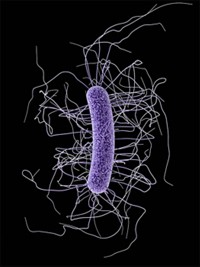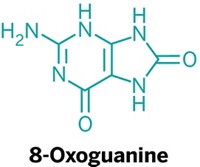Advertisement
Grab your lab coat. Let's get started
Welcome!
Welcome!
Create an account below to get 6 C&EN articles per month, receive newsletters and more - all free.
It seems this is your first time logging in online. Please enter the following information to continue.
As an ACS member you automatically get access to this site. All we need is few more details to create your reading experience.
Not you? Sign in with a different account.
Not you? Sign in with a different account.
ERROR 1
ERROR 1
ERROR 2
ERROR 2
ERROR 2
ERROR 2
ERROR 2
Password and Confirm password must match.
If you have an ACS member number, please enter it here so we can link this account to your membership. (optional)
ERROR 2
ACS values your privacy. By submitting your information, you are gaining access to C&EN and subscribing to our weekly newsletter. We use the information you provide to make your reading experience better, and we will never sell your data to third party members.
Biological Chemistry
A New Facet Of Drug Resistance
Antibiotics: Low doses of one medication can cause resistance to that one and others
by Stu Borman
February 22, 2010
| A version of this story appeared in
Volume 88, Issue 8
Doctors insist that patients take a full course of antibiotics to prevent drug resistance, which bacteria can develop when the dose is too low. A study now shows that inadequate doses can elicit resistance not only to administered antibiotics but to other antibiotics as well. And the study points to DNA damage and error-prone DNA repair as the cause.
The work could help scientists develop new strategies to fight the growing problem of antibiotic resistance. According to the Centers for Disease Control & Prevention, “The number of bacteria resistant to antibiotics has increased in the last decade.”
Biomedical engineering professor James J. Collins and coworkers at Boston University have found that resistance can develop when drug-induced radical oxygen species damage bacterial DNA. Although the DNA repair system often fixes the DNA damage, it is error-prone and can generate random mutations that affect bacterial resistance, the study finds (Mol. Cell, DOI: 10.1016/j.molcel.2010.01.003).
Resistance might or might not develop against the administered agent. For example, low-dose ampicillin might elicit mutant bacteria with broad resistance to other antibiotics but not to ampicillin itself. Models of low-dose-antibiotic resistance have generally focused on resistance to administered agents, not to other drugs.
“These findings drive home the need for tighter regulations on the use of antibiotics, especially in agriculture; for doctors to be more disciplined in their prescription of antibiotics; and for patients to be more disciplined in following their prescriptions,” Collins says. Co-administration of DNA repair system inhibitors—to prevent DNA repair errors that cause mutations—might help address the problem, he notes.
The results suggest “that any bactericidal drug in a therapeutic cocktail may assist bacteria in attaining resistance to the entire combination,” write infectious disease specialist Deborah T. Hung of the Broad Institute, in Cambridge, Mass., and coworker Benjamin B. Kaufmann in a commentary about the work. The findings “remind us how little we know about how resistance is generated at the molecular level and underscore why preventing the emergence of these lethal strains remains such a formidable challenge.”






Join the conversation
Contact the reporter
Submit a Letter to the Editor for publication
Engage with us on Twitter